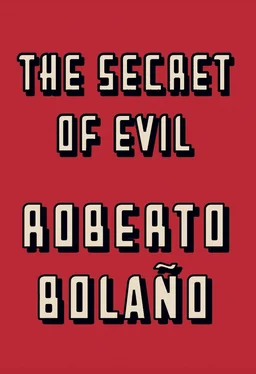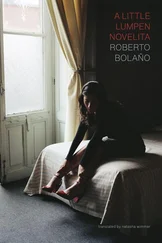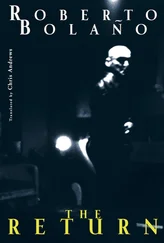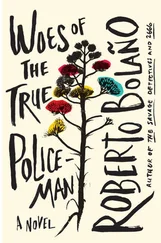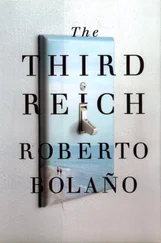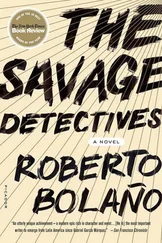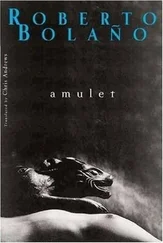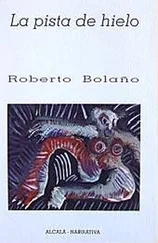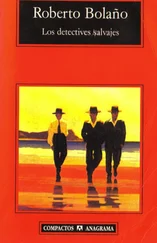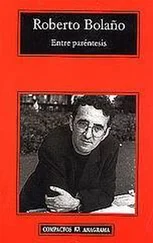Roberto Bolaño
The Secret of Evil
This volume gathers a handful of stories and narrative sketches gleaned from the more than fifty files found on Roberto Bolaño’s computer after his death. Many of those files contain poems, stories, novels, articles, talks and interviews that Bolaño had published during his lifetime or had prepared for publication. Other files contain poems and narrative sketches or fragments in various states of completion, sometimes on their own, but more often grouped and inventoried in what appear to be drafts of books, to which Bolaño himself, from a very early stage, would usually give a provisional title, and sometimes even a dedication. Such is the case with the file entitled “BAIRES,” which has served as the basis for the composition of this volume. There are multiple indications that Bolaño was working on this file in the months immediately preceding his death, although there is no record of the dates on which the various files were created or modified. The conviction that this was one of the last documents on which Bolaño worked motivated the editors’ decision to preserve the dedication that figured at the beginning of the file, after the title New Stories . The possibility of keeping that title was also considered, but in the end we chose to borrow the title of one of the stories in the file, which opens with a declaration that is apposite to many of the pieces collected here: “This story is very simple, although it could have been very complicated. Also, it’s incomplete, because stories like this don’t have an ending.”
Bolaño’s work as a whole remains suspended over the abysses that it dares to sound. All his narratives, not just The Secret of Evil , seem to be governed by a poetics of inconclusiveness. The eruption of horror seems to determine the interruption of the storytelling; or perhaps it is the other way around: the interruption of the telling suggests the imminence of horror. In any case, the inconclusive nature of Bolaño’s novels and stories makes it difficult to decide which of the unpublished narrative texts should be regarded as finished and which are simply sketches. The task is further complicated by Bolaño’s progressive radicalization of what I have called his poetics of inconclusiveness. And to make the distinction more difficult still, Bolaño rarely began to write a story without giving it a title and immediately establishing a definite tone and atmosphere; his writing, which is always captivating, virtually never stumbles or hesitates. Kafka’s notebooks and posthumous papers place the reader in a similar situation: one is continually coming across marvelous narrative openings, which then break off abruptly. Decisions as to the wholeness and self-sufficiency of particular pieces can only be based on judgments that, although grounded, are inevitably subjective, and little would be gained by explaining them here.
Almost half the pieces in this volume come from the file mentioned above, specifically: “The Troublemaker,” “The Tour,” “The Room Next Door,” “Vagaries of the Literature of Doom,” “The Colonel’s Son,” “Scholars of Sodom,” “The Secret of Evil,” and “Sevilla Kills Me” (in that order in the file). There is evidence to suggest that some of these pieces are unfinished. But we thought it better to let the reader form his or her own opinion on that matter. “Vagaries of the Literature of Doom” and “Sevilla Kills Me” are the texts of two addresses given by Bolaño (the second is clearly unfinished) and have been published in the posthumous volume Between Parentheses (Barcelona: Anagrama, 2004; New York: New Directions, 2011), despite which they are reproduced here in order to respect and continue a marked tendency, in Bolaño’s late collections, to include non-narrative pieces, with the obvious intention of enriching the genre of the short story by blurring its boundaries.
The remaining pieces in this volume — “I Can’t Read,” “Labyrinth,” “Daniela,” “Death of Ulises,” “Suntan,” “Colonia Lindavista,” “Beach,” “The Old Man of the Mountain,” “The Days of Chaos” and “Crimes” — come from a file labeled STORIX. The text entitled “Beach,” first published in the newspaper El Mundo on August 17, 2000, appeared in Between Parentheses , but is republished here in what we consider to be a more appropriate context. As to “I Can’t Read,” which is clearly unfinished, its content is wholly autobiographical and the narrator is, without doubt, Roberto Bolaño himself; nevertheless, he refers to the text, in the first line, as “a story” — a clear indication of his increasingly open idea of the genre.
The piece entitled “Scholars of Sodom,” which is no doubt incomplete, comes from a file labeled STOREC, and is in fact composed of two texts with the same title, the second, written some years later, taking the first as its starting point. In this volume, the two versions are given one after another, so as to form a sequence. Incidentally, Bolaño toyed with the idea of using the title “Scholars of Sodom” for a collection of stories very similar to the one that was finally published as Murdering Whores ( Putas asesinas , Barcelona, Anagrama, 2001).
The long story entitled “Muscles,” probably the beginning of an unfinished novel, perhaps an early version of Una novelita lumpen (Barcelona, Mondadori, 2002), is the only text in a file labeled MUSCLE.
All the texts are reproduced here without any changes apart from the correction of occasional oversights or literal errors. It is worth emphasizing that Bolaño’s texts, whether written by hand or on a word processor, almost always exhibit a high degree of clarity and orderliness. As a result, the author’s verbal intentions are unequivocal, and there has been no need for editorial reconstructions, which are always open to dispute.
The order in which the texts are presented here is the product of intuition rather than capricious decisions on the part of the editors, who hope not to have presumed too far or erred too much in their desire to endow the whole with a deliberate rhythm and an inner coherence.
Ignacio Echevarría
Barcelona, September 2005
for my children Lautaro and Alexandra
When we arrived in Mexico, in 1968, a friend of my mother’s put us up for the first few days, after which we rented an apartment in Colonia Lindavista. I’ve forgotten the name of the street; sometimes I think it was called Aurora, but maybe I’m getting mixed up. In Blanes I lived for a few years in an apartment on a Calle Aurora, so it seems unlikely that I lived on another Calle Aurora in Mexico, although the name’s not all that unusual: quite a few cities have a street with that name. The Calle Aurora in Blanes, by the way, is no more than twenty yards long, and more like an alley than a street. The one in Colonia Lindavista, if it really was called Calle Aurora, was narrow but long, four blocks at least, and we lived there for the first year of our long residence in Mexico.
The woman we rented the apartment from was called Eulalia Martínez. She was a widow and she had three daughters and a son. She lived on the first floor of the building, a building that seemed normal to me at the time, but thinking back now, I see it as a conglomerate of oddities and blunders, because the second floor, which you got to by climbing an outdoor staircase, and the third floor, to which there was a metal ladder, had been added much later on and possibly without permits. The differences were striking: the apartment on the first floor had high ceilings and a certain dignity; it was ugly but it had been built according to an architect’s plans. The second and third floors were the fruit of ad hoc interactions between Doña Eulalia’s aesthetic sense and the skills of a builder friend. The reasoning behind this architectonic corpulence was not entirely mercenary. The owner of our apartment had four children, and the four apartments on the two additional floors had been built for them, so that they would stay close to their mother when they got married.
Читать дальше
